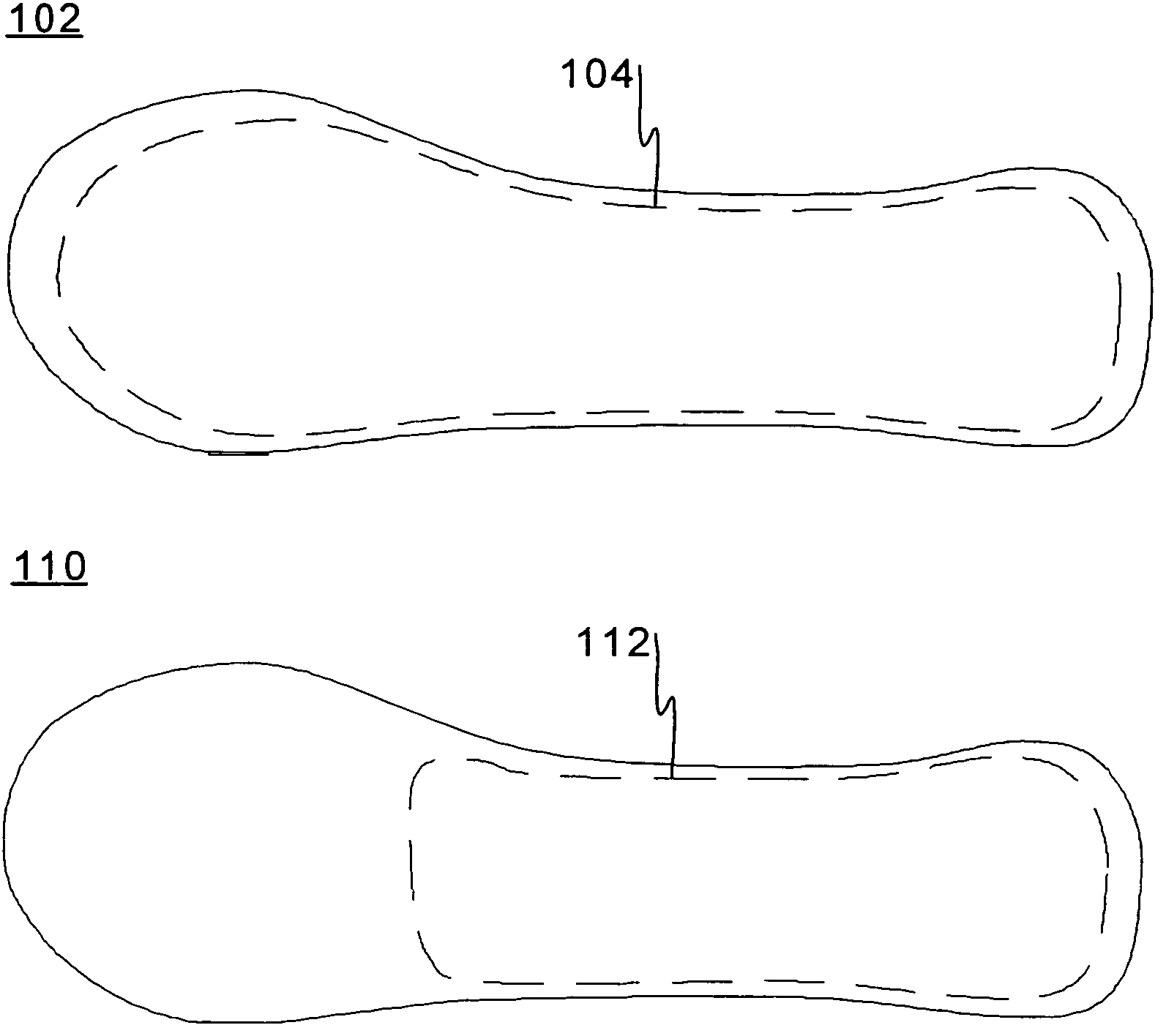Individually formed footwear and a related method
a technology of individual formation and footwear, applied in the field of footwear, can solve the problems of causing oversupination, ovepronation or oversupination, and affecting the posture of the body, so as to reduce ovepronation or oversupination, realign the gait, and improve the effect of body postur
- Summary
- Abstract
- Description
- Claims
- Application Information
AI Technical Summary
Benefits of technology
Problems solved by technology
Method used
Image
Examples
Embodiment Construction
[0041]A preform (˜blanket) insole has at least one layer, which is made of thermoplastic and reaches out at least from under the heel to under the plantar arch of the target person's, hereinafter client, foot. Advantageously two or three material layers that are connected together are used in the perform insole for the comfort of the client. The upper layer (if used) of the preform insole is placed against the foot and the lower layer is placed against the shoe. Materials of these two layers can be selected among any prior art materials used in insoles. For example, the lower layer may be constructed from a known material such as Rheluflex (trademark of Rhenoflex GmbH Ltd) comprising non-woven polyester as a carrier, ionomerresin-ethylvinylacetate blend as an extruded core, and EVA-Hotmelt as an adhesive.
[0042]The middle layer of the insole (in case of three layers) is made of thermoplastic. The used thermoplastic can be selected from a large group of known thermoplastics. The criti...
PUM
 Login to View More
Login to View More Abstract
Description
Claims
Application Information
 Login to View More
Login to View More - R&D
- Intellectual Property
- Life Sciences
- Materials
- Tech Scout
- Unparalleled Data Quality
- Higher Quality Content
- 60% Fewer Hallucinations
Browse by: Latest US Patents, China's latest patents, Technical Efficacy Thesaurus, Application Domain, Technology Topic, Popular Technical Reports.
© 2025 PatSnap. All rights reserved.Legal|Privacy policy|Modern Slavery Act Transparency Statement|Sitemap|About US| Contact US: help@patsnap.com



